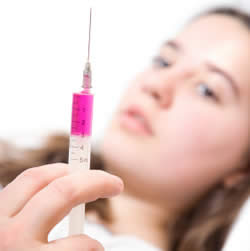
Treatments available for HPV include the removal of symptoms, and removal of genital warts using chemical compounds. Although there is no real treatment of HPV, many varieties will be withdrawn with no treatment because the body immune system reacts properly.
There are vaccines for HPV, such as Gardasila and Cervarixa created to prevent up to four percent of the variation of the virus HPV. Those immunizations are effective for women aged between sixteen and twenty-four, for the prevention of HPV and genital wart.
The only way to be completely safe is abstinence.
There are vaccines for HPV, such as Gardasila and Cervarixa created to prevent up to four percent of the variation of the virus HPV. Those immunizations are effective for women aged between sixteen and twenty-four, for the prevention of HPV and genital wart.
The only way to be completely safe is abstinence.



